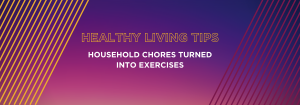Stuck At Home? Three Tips for Keeping Bodies and Brains Moving for the Whole Family

Back to physical health resource hub
The COVID-19 pandemic, with quarantine and social distancing measures, has many of us stuck at home far more frequently than normal. More time at home often means more time watching television, more screen time and increased sedentary lifestyle choices. Many of us feel more stressed, more fatigued and more irritable because of this new threat and its ramifications. Fortunately, there are a few simple strategies to help alleviate some of the negative effects of social distancing.
Regular physical activity and movement for the whole family is an important part of life and should be incorporated into the daily routine. Physical activity can reduce stress and anxiety, improve mood and improve cognitive performance for both children and adults. Here are three simple ways to keep the whole household moving and feeling better during this unprecedented time:
- Movement Breaks: Did you know that the CDC recommends at least 60 minutes a day of physical activity for children and adolescents? An easy way to meet this goal is to set up six movement breaks a day; each lasting 10 minutes. You might try setting an alarm on your phone every 90 minutes for a 10-minute movement break. Making sure everyone in the house participates will make it fun and positive. Walking, red light green light, Simon says, tag or even allowing everyone to pick their own movement break activity are all great options. All you need to do is stay in constant motion for 10 minutes.
- Gross Motor Dice: Physical activity is more fun if we do it together. Consider playing a game as a family. Roll dice and correlate each number to a game or physical activity. Then perform the activity for a set amount of time.
- Accountability Charts: Consider using a chart to track daily physical activity. If you achieve your goal and complete the chart, you may earn a reward. A reward could be 10 minutes of screen time, a preferred activity or even a little gift.
The COVID-19 pandemic has challenged us all in many ways. Let’s make sure to keep moving so we can deal with stress, improve our moods and improve our brain’s function during these difficult times. Simple movement can accomplish all of these goals and, hopefully, create some fun memories along the way.
References
- Bidzan-Bluma, Ilona, and Małgorzata Lipowska. “Physical Activity and Cognitive Functioning of Children: A Systematic Review.” International Journal of Environmental Research and Public Health, vol. 15, no. 4, Apr. 2018. PubMed Central, doi:10.3390/ijerph15040800.
- CDC. “CDC Works 24/7.” Centers for Disease Control and Prevention, 21 May 2020, https://www.cdc.gov/index.htm.
- “Moving to Improve | BU Today.” Boston University, http://www.bu.edu/articles/2016/moving-to-improve/. Accessed 21 May 2020.
- Wu, Xiu Yun, et al. “The Influence of Physical Activity, Sedentary Behavior on Health-Related Quality of Life among the General Population of Children and Adolescents: A Systematic Review.” PLoS ONE, vol. 12, no. 11, Nov. 2017. PubMed Central, doi:10.1371/journal.pone.0187668.


